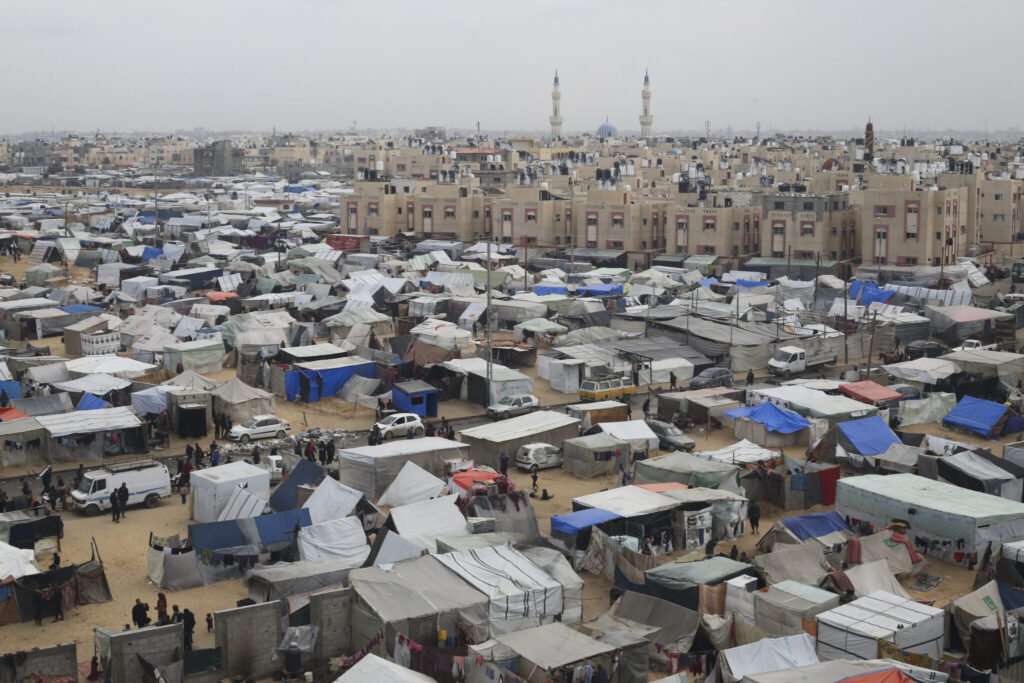Aid convoys carrying food reached northern Gaza this week, Israeli officials said Wednesday, the first major delivery in a month to the devastated, isolated area, where the U.N. has warned of worsening starvation among hundreds of thousands of Palestinians amid Israel’s offensive.
Quick Read
- Aid convoys delivered food to northern Gaza, marking the first major delivery in a month to the region devastated by Israel’s offensive, as the U.N. warns of worsening starvation among Palestinians.
- International efforts, led by the U.S., Egypt, and Qatar, are underway to broker a ceasefire between Israel and Hamas, aiming for a pause in fighting and the release of hostages before Ramadan.
- Families of hostages held by Hamas in Gaza began a four-day march to demand their release, with some previously freed hostages joining the march toward Israeli Prime Minister Netanyahu’s residence.
- The hostages, taken during Hamas’ attack on southern Israel on Oct. 7, symbolize Israel’s perceived failure to protect its citizens, with some 130 hostages remaining and about a quarter believed to be dead.
- Israel’s assault has resulted in over 29,900 Palestinian deaths, with U.N. officials warning of further casualties if Israel attacks Rafah, where over half of Gaza’s population has sought refuge.
- Over 576,000 Palestinians in Gaza are on the brink of famine, with northern Gaza facing acute hunger and malnutrition, particularly among children under two.
- The recent aid deliveries to northern Gaza were facilitated by the Israeli military office COGAT, with nearly 50 trucks entering the region this week, though the U.N. was not involved in these deliveries.
- The U.N. has struggled to deliver food to northern Gaza due to restrictions and social collapse, with urgent calls for Israel to open northern crossings and ensure safe corridors for aid.
- The Gaza Health Ministry reports a death toll of 29,954 from Israel’s offensive, with two-thirds of the dead being children and women, while Hamas’ attack on Israel killed approximately 1,200 people, mainly civilians.
The Associated Press has the story:
Food aid reaches N. Gaza for 1st time in weeks. Israeli hostages’ families push for release
Newslooks- RAFAH, Gaza Strip (AP) —
Aid convoys carrying food reached northern Gaza this week, Israeli officials said Wednesday, the first major delivery in a month to the devastated, isolated area, where the U.N. has warned of worsening starvation among hundreds of thousands of Palestinians amid Israel’s offensive.
The increasing alarm over hunger across Gaza has fueled international calls for a cease-fire as the U.S., Egypt and Qatar work to secure a deal between Israel and Hamas for a pause in fighting and the release of some of the hostages seized by Hamas in its Oct. 7 attack.
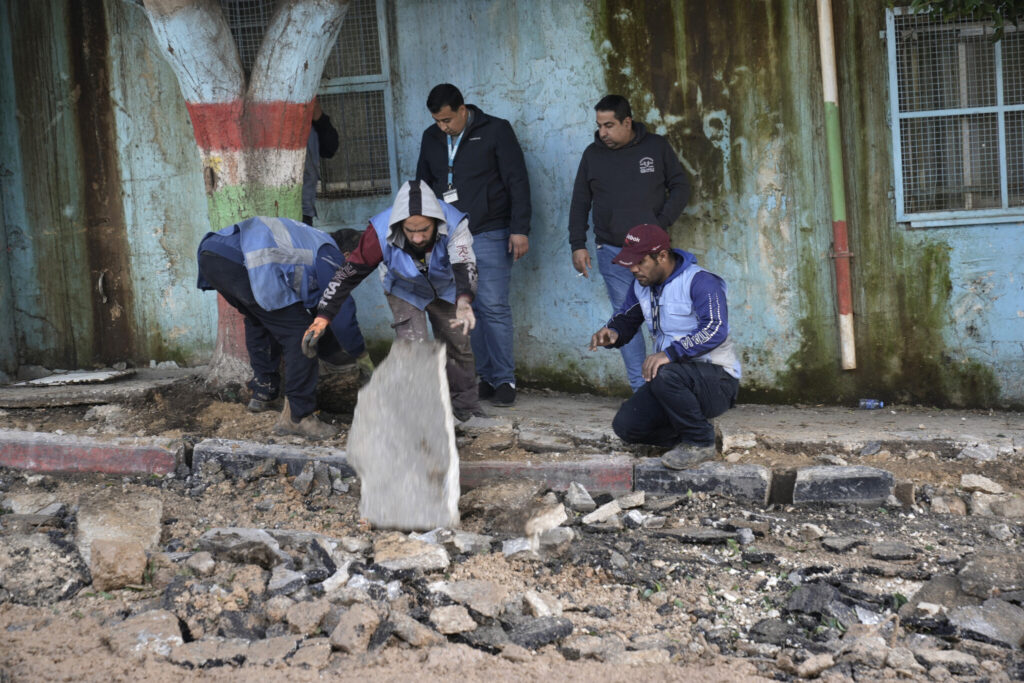
Mediators hope to reach an agreement before the Muslim holy month of Ramadan starts around March 10. But so far, Israel and Hamas have remained far apart in public on their demands.
Increasing the pressure on Israeli Prime Minister Benjamin Netanyahu to reach a deal, families of hostages on Wednesday launched a four-day march from southern Israel to Jerusalem to demand their loved ones be set free. Some of the around 100 hostages freed during a cease-fire in late November are joining the march, which is to end near Netanyahu’s official residence.
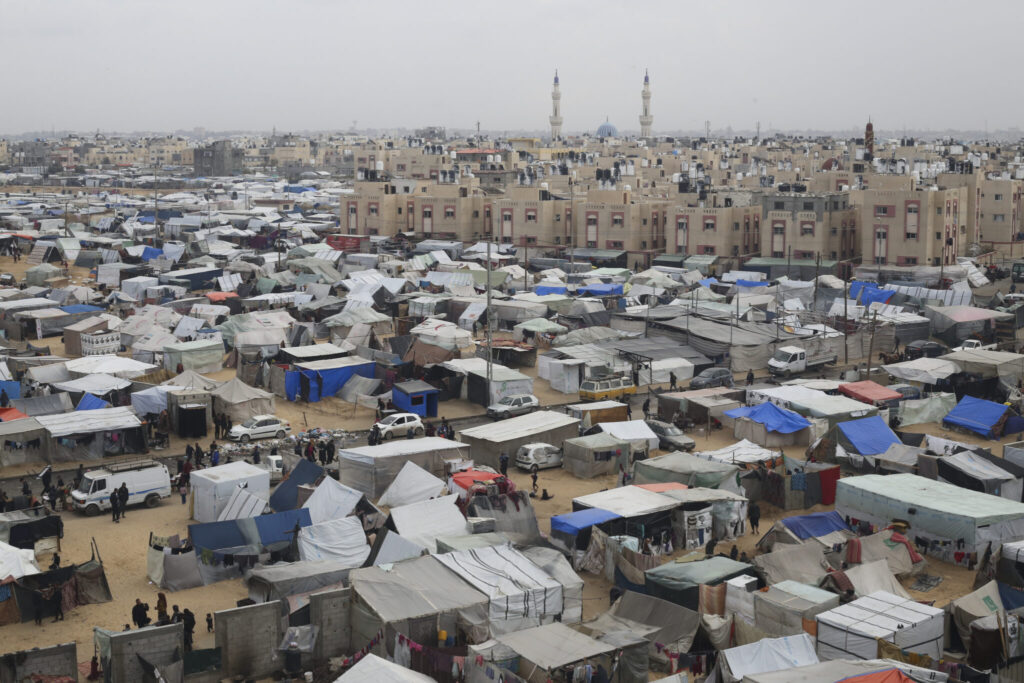
The plight of the hostages has deeply shaken Israelis, who see in them an enduring symbol of the state’s failure to protect its citizens from Hamas’ assault. In its Oct. 7 attack, the Palestinian militant group abducted roughly 250 people, according to Israeli authorities, including men, women, children and older adults. After the November releases, some 130 hostages remain, and Israel says about a quarter of them are dead.
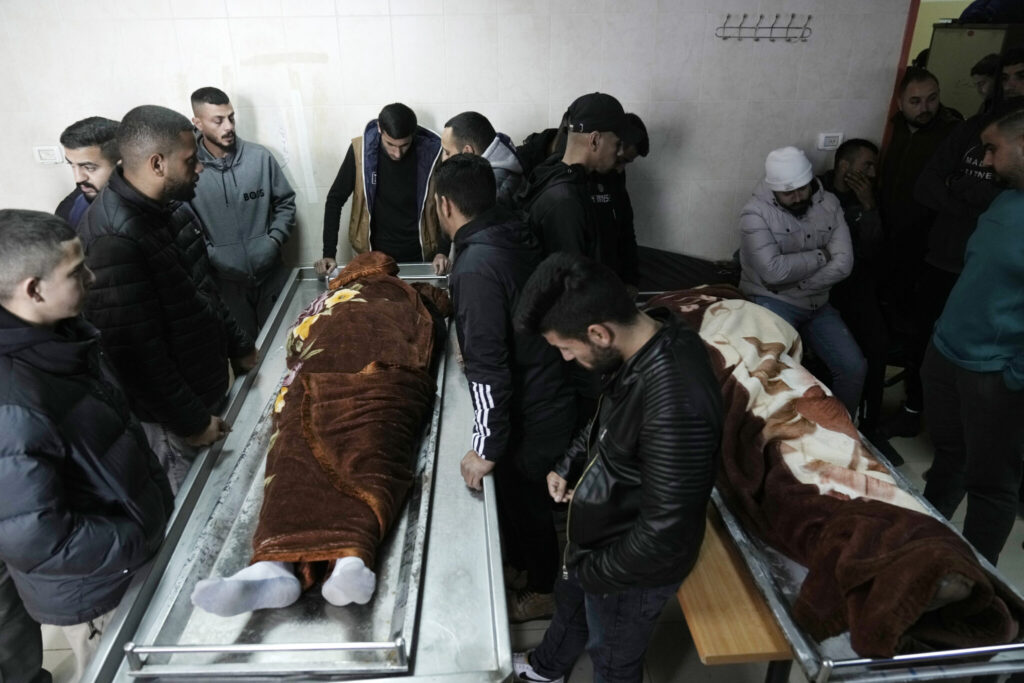
Israel’s assault on Gaza, which it says aims at destroying Hamas after its attack, has killed more than 29,900 Palestinians. U.N. officials warn of further mass casualties if it follows through on vows to attack the southernmost city of Rafah, where more than half of Gaza’s population of 2.3 million has taken refuge. They also say a Rafah offensive could collapse the aid operation that has already been crippled in the fighting.
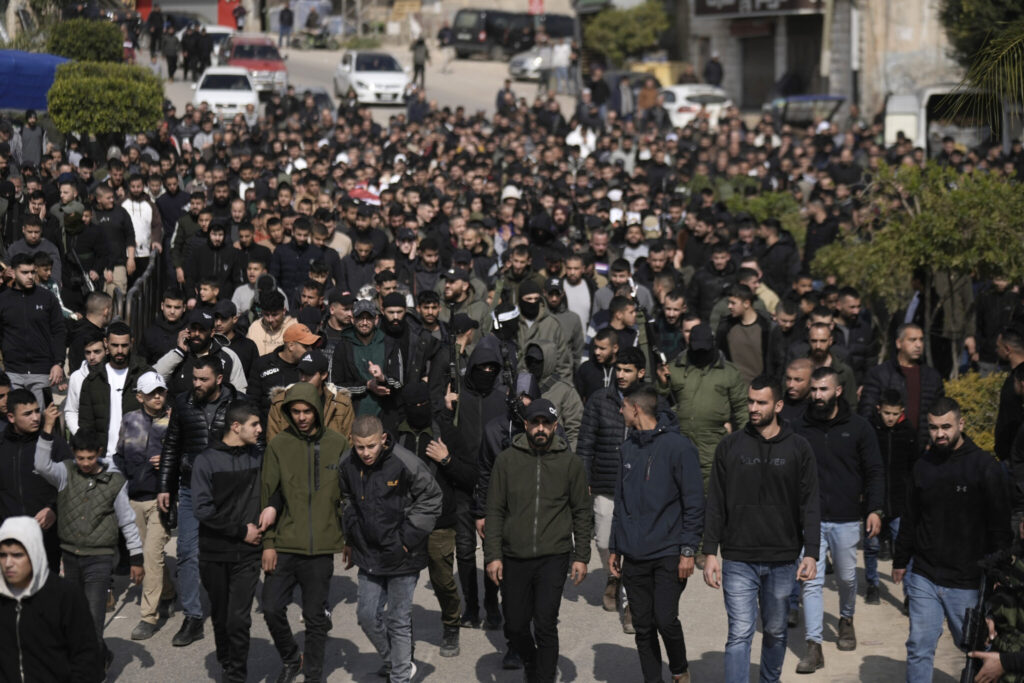
Across Gaza, more than 576,000 people – a quarter of the population – are a step away from famine, the U.N. says. But northern Gaza in particular has been gutted by hunger. The north has largely been cut off and much of it has been leveled since Israeli ground troops invaded in late October. Several hundred thousand Palestinians are believed to remain there, and many have been reduced to eating animal fodder to survive. The U.N. says one in 6 children under 2 in the north suffer from acute malnutrition and wasting.
A convoy of 31 trucks carrying food entered northern Gaza on Wednesday, the Israeli military office that oversees Palestinian civilian affairs said. The office, known by the acronym COGAT, said nearly 20 other trucks entered the north on Monday and Tuesday. Associated Press footage showed people carrying sacks of flour from the distribution site.
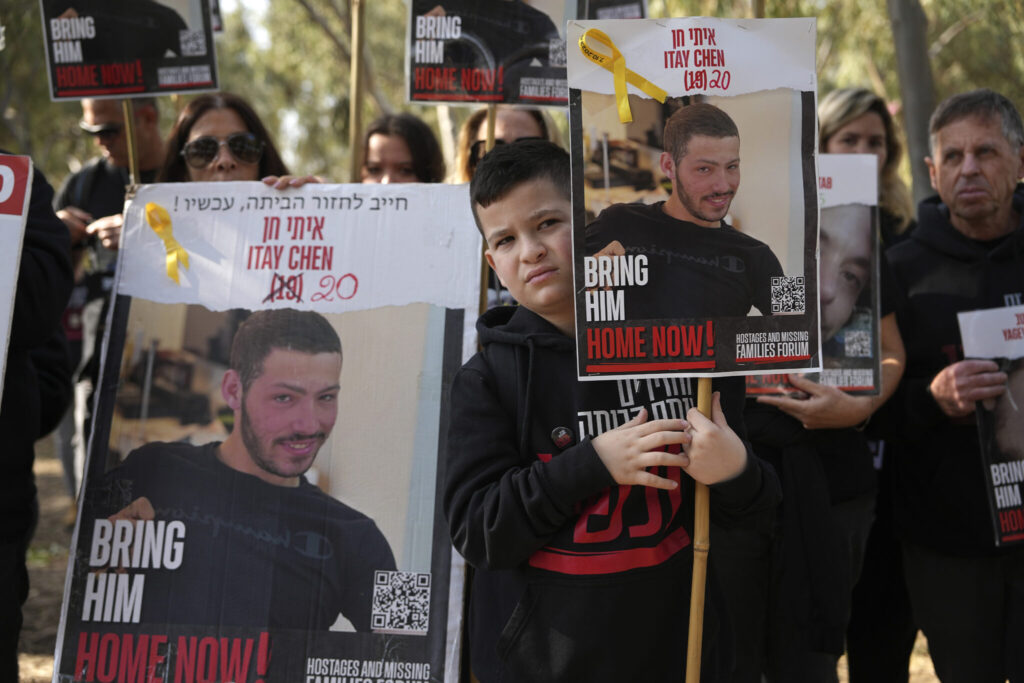
It was not immediately clear who carried out the deliveries. The U.N. was not involved, said a spokesperson for the U.N.’s humanitarian coordination office, Eri Keneko.
As of Sunday, the U.N. had been unable to deliver food to northern Gaza since Jan. 23, according to Philippe Lazzarini, the head of UNRWA, the U.N. agency for Palestinian refugees that has led the aid effort during the war. On Feb. 18, the World Food Program attempted a delivery to the north for the first time in three weeks, but much of the convoy’s cargo was taken en route by desperate Palestinians, and it was only able to distribute a small amount in the north. Two days later, the WFP announced it was pausing deliveries to the north because of the chaos.
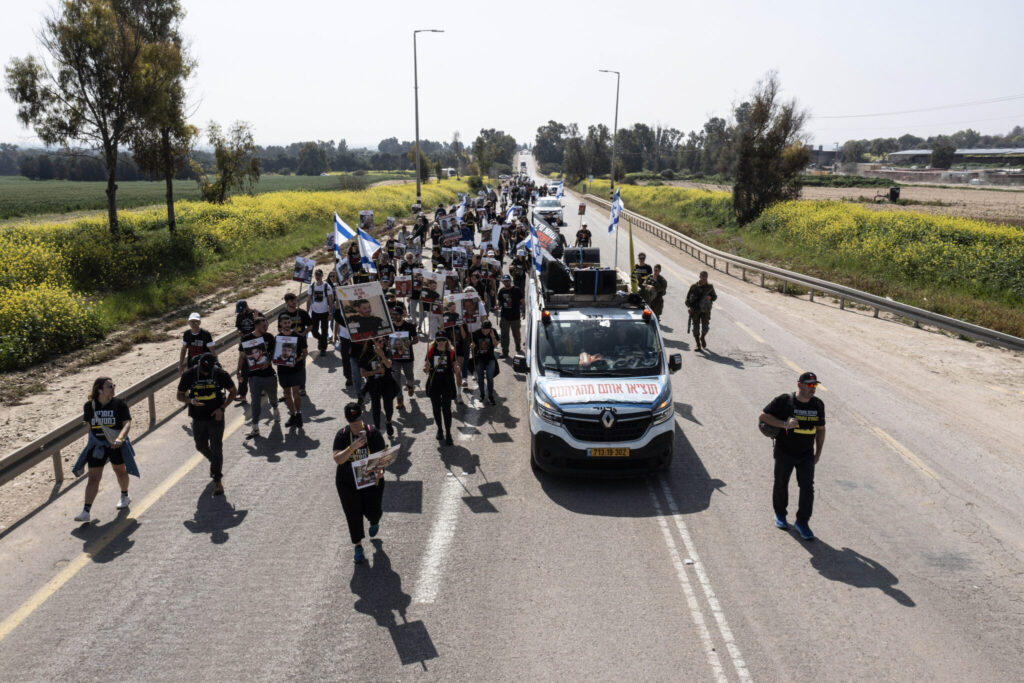
Since launching its assault on Gaza following Hamas’ Oct. 7 attack, Israel has barred entry of food, water, medicine and other supplies except for a trickle of aid entering the south from Egypt at the Rafah crossing and Israel’s Kerem Shalom crossing. Despite international calls to allow in more aid, the number of supply trucks entering has dropped dramatically in recent weeks.
COGAT said Wednesday that Israel does not impose limits on the amount of aid entering, blaming U.N. agencies and aid groups for the bottleneck.
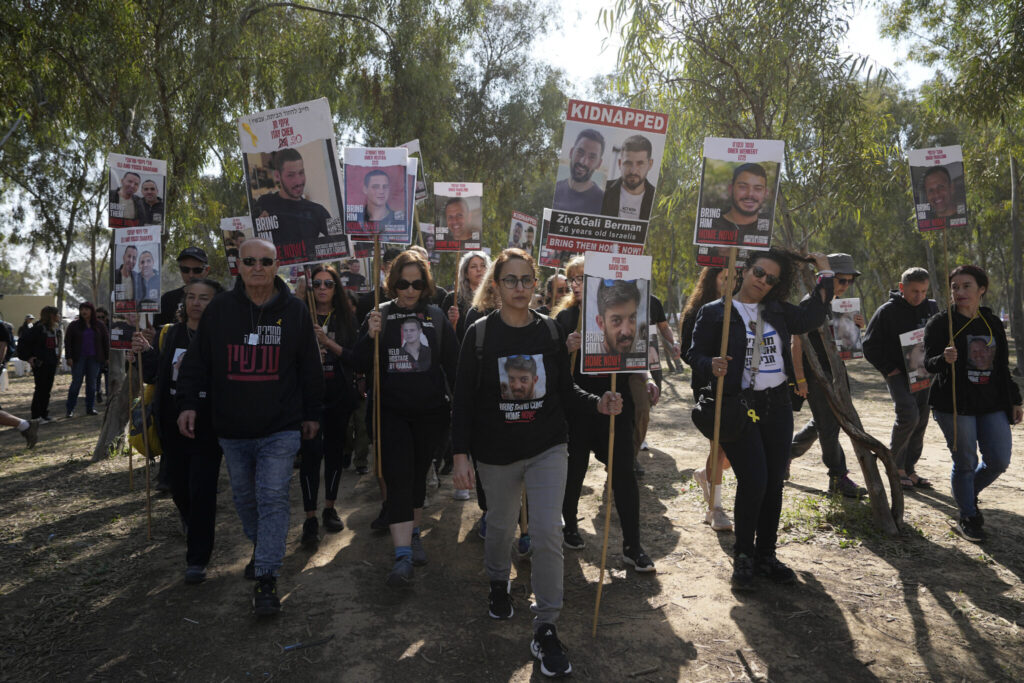
U.N. officials say the unloading of trucks entering the Strip has been hampered because Gaza police stopped protecting convoys on the Palestinian side of Kerem Shalom after Israeli strikes on them. Distributions within Gaza have been crippled by fighting, military restrictions, lack of trucks and social collapse, as hungry Palestinians mob aid vehicles and take supplies. The U.N. has called for Israel to open crossings in the north to aid deliveries and guarantee safe corridors for convoys.
The director of Kamal Adwan Hospital in northern Gaza said the number of children who have died in recent days from severe malnutrition and dehydration had risen to four.
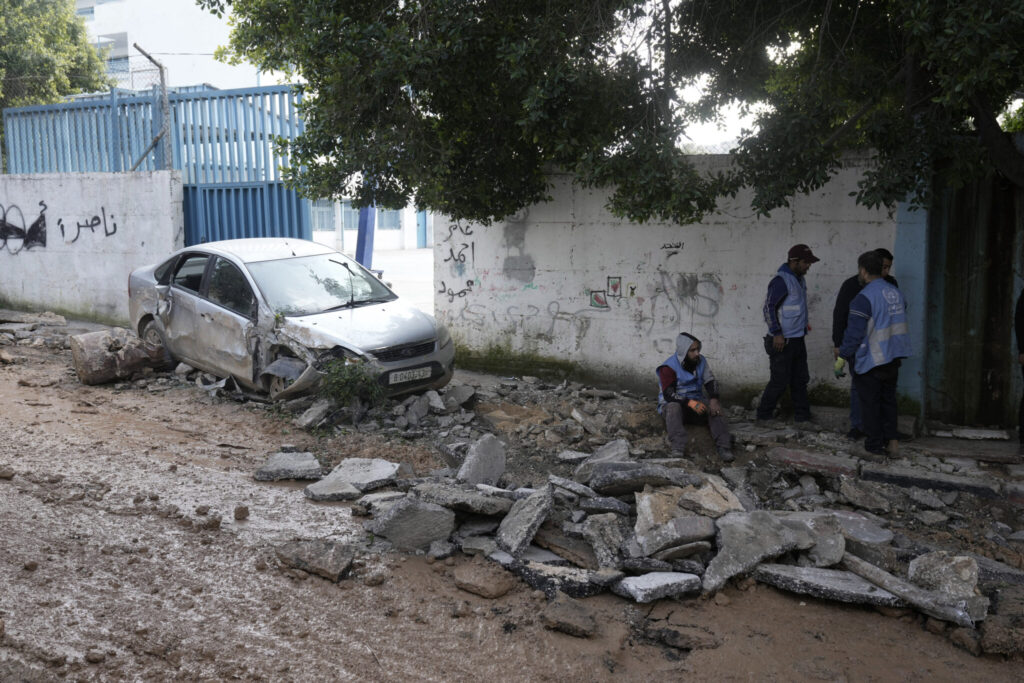
Dr. Hussam Abu Safiya said that operations at the hospital will shut off starting Wednesday due to fuel shortages. “Dialysis, intensive care, childcare, and surgeries will stop. Therefore, we will witness more deaths in the coming days,” he said.
But the pain from the lack of supplies extends across Gaza. Project Hope, a humanitarian group that runs a clinic in the central town of Deir al-Balah, said 21% of the pregnant women and 11% of the children under 5 it has treated in the last three weeks are suffering from malnutrition.
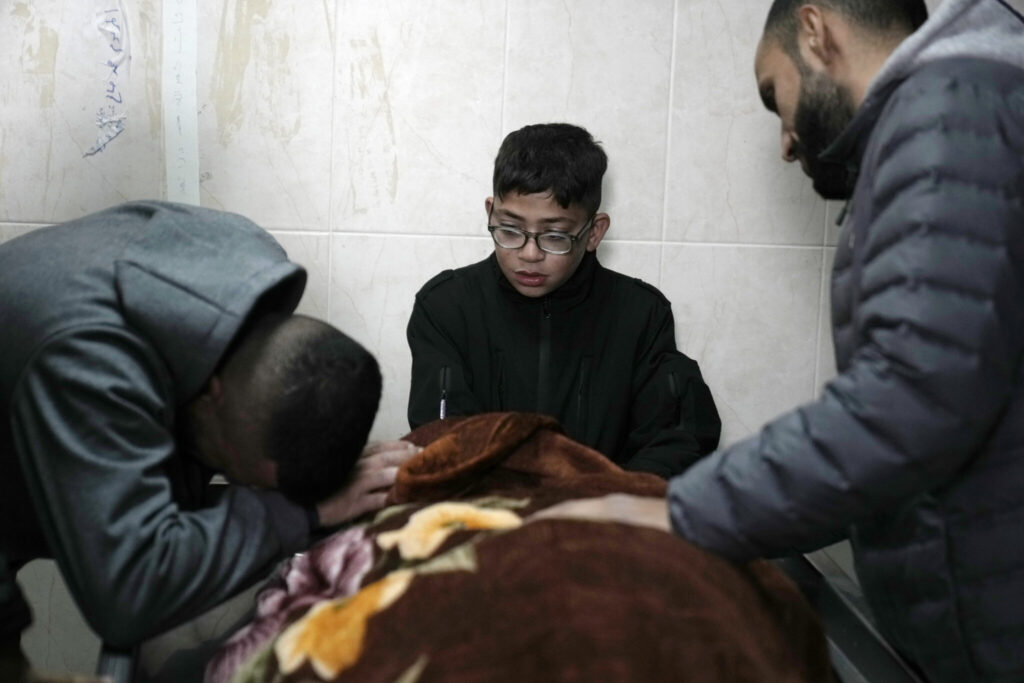
The Gaza Health Ministry said the death toll from Israel’s offensive had risen to 29,954 people, with 70,325 wounded. The ministry doesn’t differentiate between civilians and combatants, but it says two-thirds of the dead were children and women.
In its attack on southern Israel on Oct. 7, Hamas and other Palestinian militants killed some 1,200 people, mainly civilians.

